Panasonic TX-40JX850 Review
An impressive small 4K HDR TV
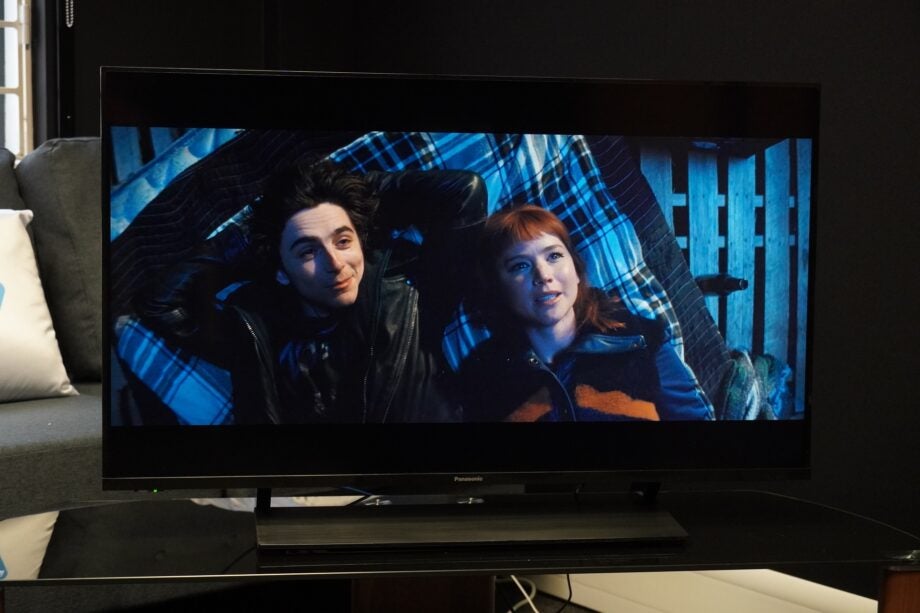

Verdict
An accomplished 40-inch 4K HDR TV from Panasonic, delivering wide HDR support and excellent picture performance, plus decent sound, too. For small rooms and bedrooms this TV is worth considering; but it’s going out of stock, and is expensive for a 40-inch model.
Pros
- Punchy HDR performance
- Premium build quality
- Decent sound
- Solid selection of video streaming apps
Cons
- Pricey
Availability
- UKRRP: £599
- USAunavailable
- EuropeTBC
- Canadaunavailable
- Australiaunavailable
Key Features
- HDR Bright Panel PlusOptimised for viewing in bright rooms
- HCX AI ProcessorPowered by Panasonic’s AI picture processor
- Multi-format HDRSupports HDR10, HDR10+ and Dolby Vision flavours of HDR
Introduction
The TX-40JX850 is about as small as you can get for a 4K TV. It’s perfectly sized for catching up on the latest streaming binge in the bedroom, or for viewing daytime TV when you’re cooking in the kitchen.
It’s part of the Panasonic’s JX850 series, which isn’t too dissimilar to the JX940 series reviewed earlier in 2022. Its HDR support spans all the main formats, and its HDR Bright Panel Plus screen looks to bring out the best in any HDR content. The My Home Screen interface has received a boost in smarts from the company’s previous generations, with voice assistant support and an extended selection of streaming apps.
An RRP of £599 makes the TX-40JX850 expensive, but its performance suggests it shouldn’t be discounted from your list if you’re looking for a small and capable smart 4K TV.
Design
- Well built
- On the heavy side for a 40-inch model
- Elegant appearance
Panasonic’s TVs have never been units to draw attention to themselves, and the same is true of the TX-40JX850. Nevertheless, it’s elegantly styled and well built for a 40-inch model.
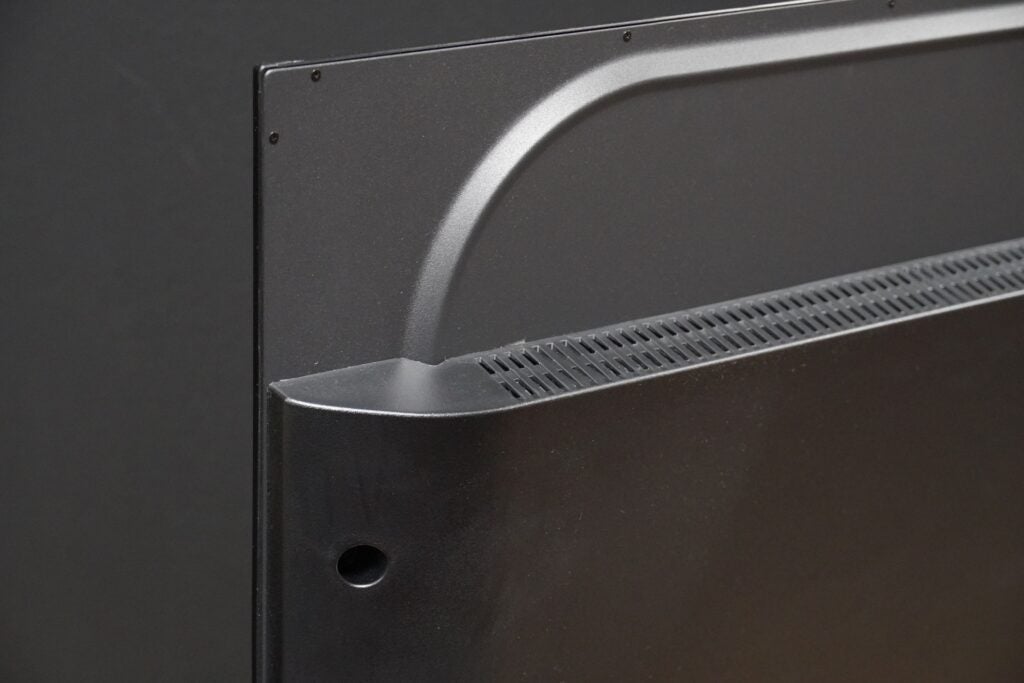
The stand, or plinth, requires feet to be attached to it, which didn’t take long to put-together. And while it does take up a degree of space, the brushed finish of the pedestal looks classy and feels premium.
The bezel that frames the screen is thin and mostly unnoticeable, apart from the bottom edge. This helps the TV to blend into the background – unless that background is in striking contrast to the TV, that is. The stand also makes it a fairly heavy unit at 13kg; as a point of comparison, LG’s 65-inch C2 weighs only 16.5kg.
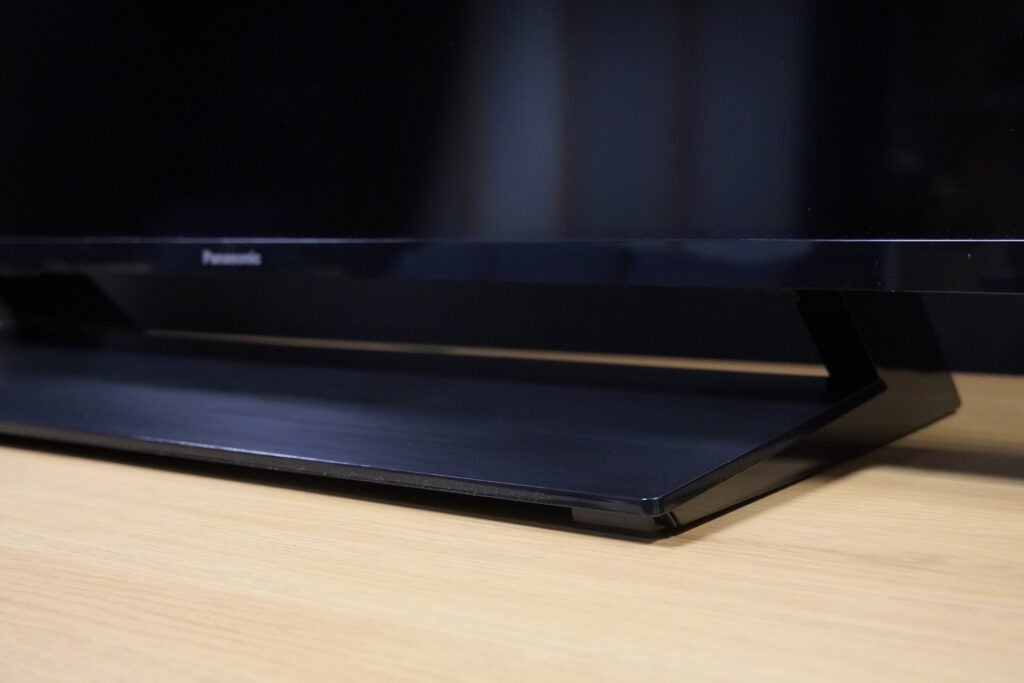
It bulks out somewhat on the rear with its depth of 63mm, but not enough that it would look ungainly if hung on a wall. The connections around the back are mostly side-facing, with a few rear-facing options that won’t be of much help if you’re planning on wall-mounting the TV.
Interface
- Support for Apple TV and Disney+ apps
- Solid remote
- Lacks the breadth of apps that rivals bring
The remote is a sizable effort but light and nice to use. Its buttons don’t sit too close together, offering a combo of cushy presses and some firm, clicky ones. You get quick-access buttons for Netflix, Rakuten TV, Prime Video, YouTube, Freeview Play and My App, to which you can map any app or feature of your choice.
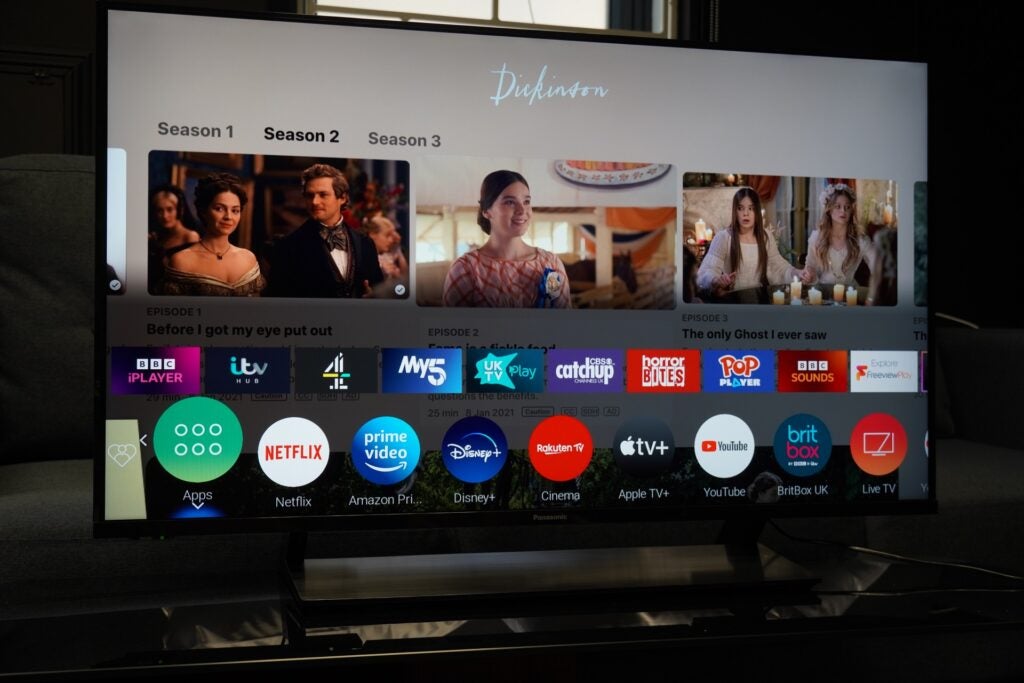
The Menu button opens the quick menu bar, from where you can get to the more in-depth menu area. Home opens up the app bar launcher, where you can press through to the main area of the My Home Screen 6.0 interface. Rather irritatingly, in My Home Screen both the “back” and “exit” button still do the same thing, exiting the interface entirely. The “back” button only works in the way it’s meant to if you’re scrolling through the menu interface; if you don’t want to exit the smart completely, you have to press “Home” and repeat the process.
My Home Screen has always been one of the more simple smart offerings out there. UK catch-up and on-demand apps dominate the top row of the interface, while other apps feature as big and colourful roundels. My Home Screen delivers a rather low quantity of apps compared to the likes of Android, Samsung Tizen or LG webOS. It caters more to the cinema fan, as Apple TV+ and Disney+ have been added to Panasonic’s 2021 range and forthcoming 2022 models.
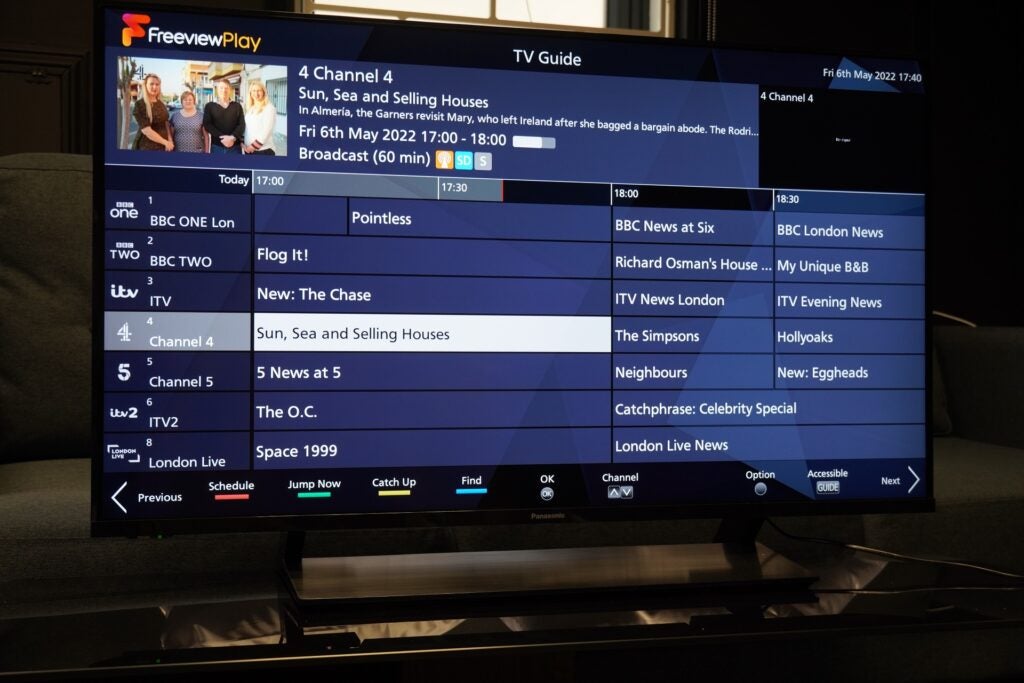
Within My Home Screen, there’s Freeview Play and the ability to record content by using a USB/hard-drive. Compared to others, it isn’t much; but the flip-side, at least you’re not bombarded by notifications and features. If you’re after a simple user experience, that’s exactly what My Home Screen delivers.
Features
- Not for high-end gaming
- eARC for sending Atmos to soundbar
- Quick input lag
Since this is a 40-inch model, we can speeding through the connection options: there are fewer to comment upon and the spec is less advanced than you’d find on the bigger models.
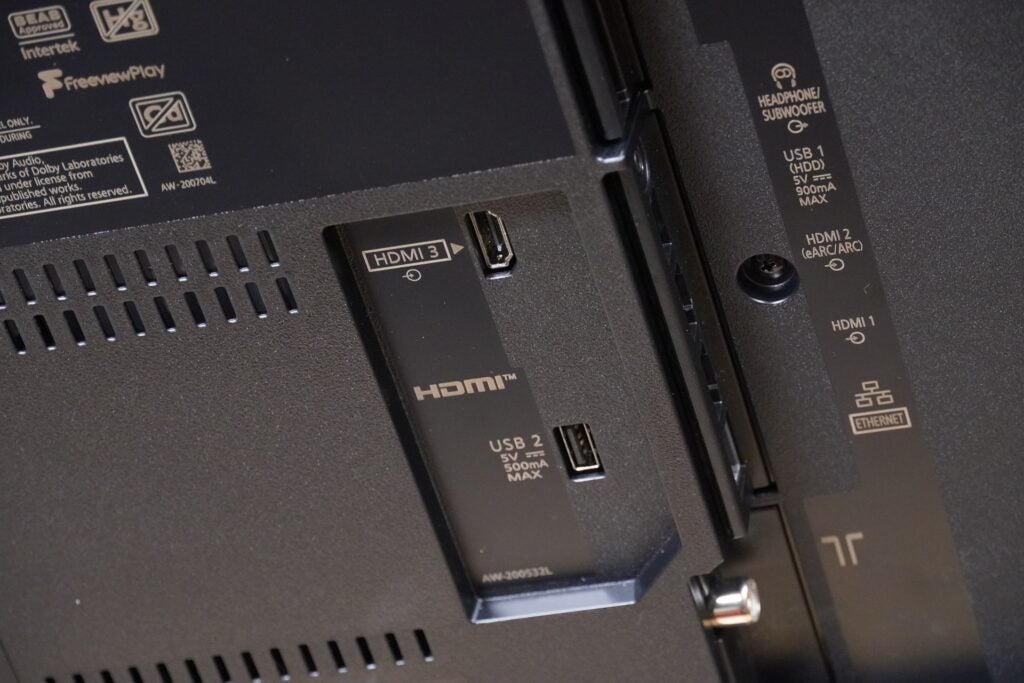
There are three HDMI 2.0 (HDMI 2 offers eARC for sending lossless audio to a soundbar), two USB (2.0 and the faster 3.0), optical digital audio out, satellite and aerial connections, Ethernet, AV component, 3.5mm AUX and a CI+ (Common Interface) 1.4 slot. There’s Auto Low Latency Mode on all HDMI inputs, but no room for Variable Refresh Rate of High Frame Rate for gamers to take advantage of if they’re thinking about a gaming TV for a bedroom.
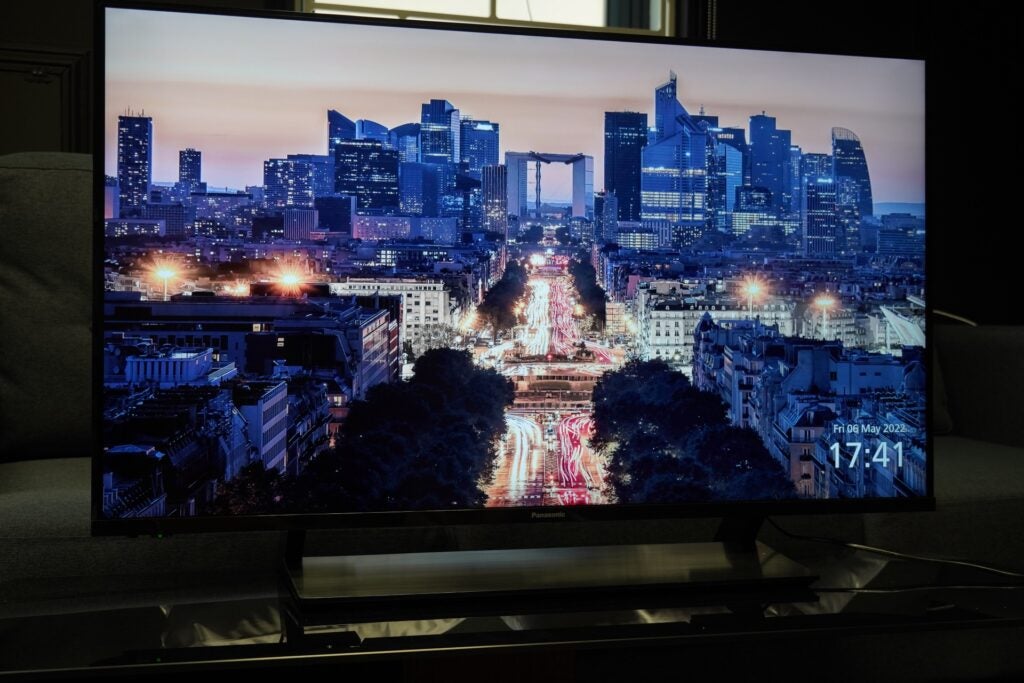
Irrespective of its lack of advanced gaming features, the Panasonic TX-40JX850 is pretty spry with its 10.4ms latency. Once again, there’s no Chromecast compatibility; for that you’ll have to look at Panasonic’s Android TV models. There is voice control for both Amazon Alexa and Google Assistant, and My Scenery presents a selection of “restful” images, perfect for some relaxation at the end of a long day.
Picture Quality
- Excellent contrast/HDR
- Decent upscaling skills
- Natural colours and tone
Despite the TX-40JX850 sporting a 40-inch screen, it comes with performance and features that elevate it above most other small-screen experiences. In terms of recent TVs, I’ve only seen the JX850 bettered by the Samsung QN90A’s Mini LED TV.
Support for HDR is wide with Dolby Vision, HDR10+, HDR10+ Adaptive – which tailors HDR10+ content better to different lighting conditions in a room – and HLG for HDR broadcasts, such as BBC iPlayer or Sky’s sports output. The use of a VA panel also reaps benefits for HDR content, with deep blacks and improved contrast.
Starting with its upscaling, the Panasonic puts in a performance that will make the TX-40JX850 a good option for those who watch plenty of broadcast/daytime TV. Upscaling benefits from strong, punchy colours, especially primary hues, while complexions are naturally conveyed when watching Interior Design Masters on the BBC; close-ups in standard definition hold up well in terms of detail.
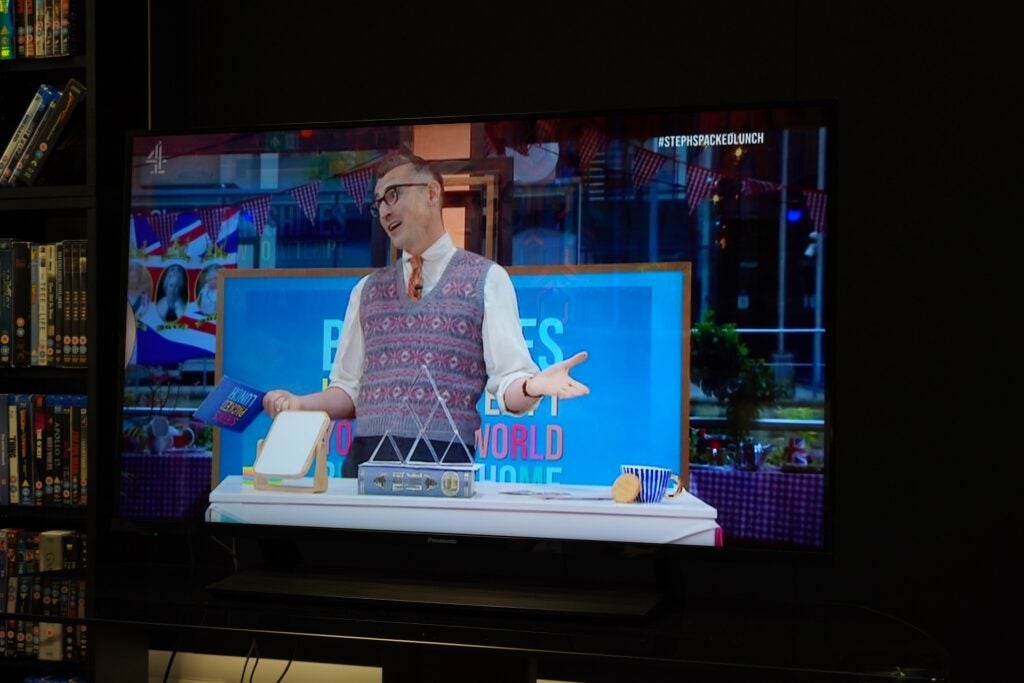
The 40-inch size helps masks the usual issues that plague standard definition content. There’s some fuzzy definition of edges in parts of the image – similar to that seen on the Toshiba UK31, – and some noise and lack of sharpness, but for casual watching it’s fine.
Watching Beetlejuice on Blu-ray, the upscaling is even better with 1080p content. The green grass of the fields in the fictional Winter River town and the rustic red of the fateful barn tunnel where the Maitland’s car plunges into the river have depth and a strong sense of accuracy and solidity. The colours on display don’t feel as if they’re misjudged, with black levels especially strong.
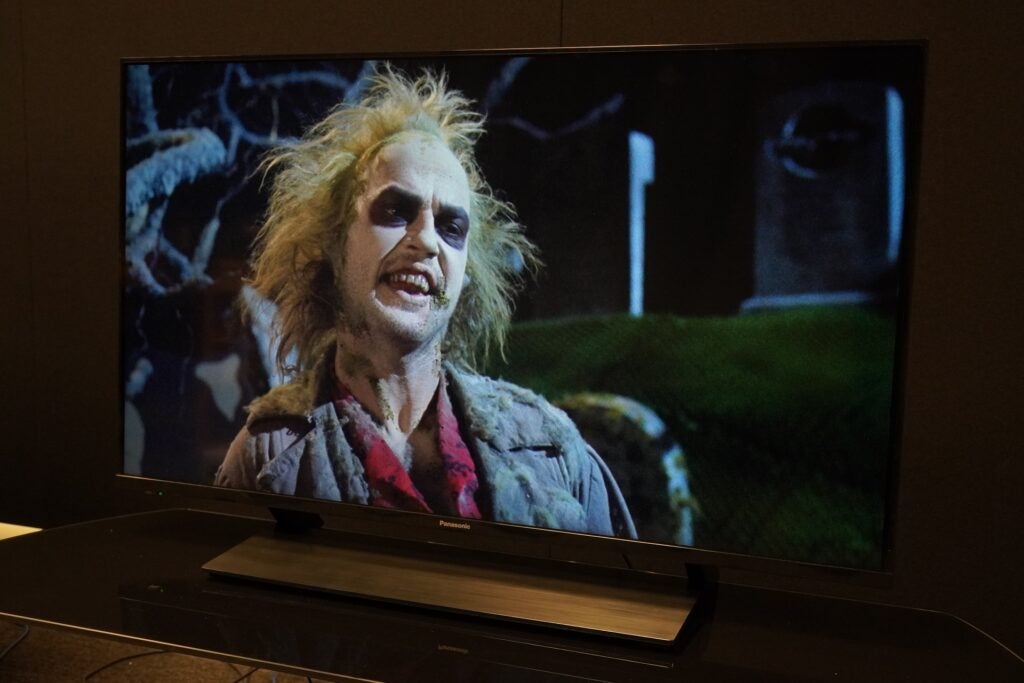
In terms of the detail the TX-40JX850 uncovers: the lack of noise, excellent sharpness, and plenty of fine detail in the texture of surfaces and clothes is revealed to good effect with the edge definition of objects and characters.
For motion, the Panasonic JX850 offers its usual coterie of IFC (Intelligent frame Creation) options – and if you’re someone who prefers motion to be on, then the “Min” option is the best for films and general broadcast content. “Max” comes on too strong, causing a degree of instability in the image when dealing with fast hand movements, general movement and camera zooms.
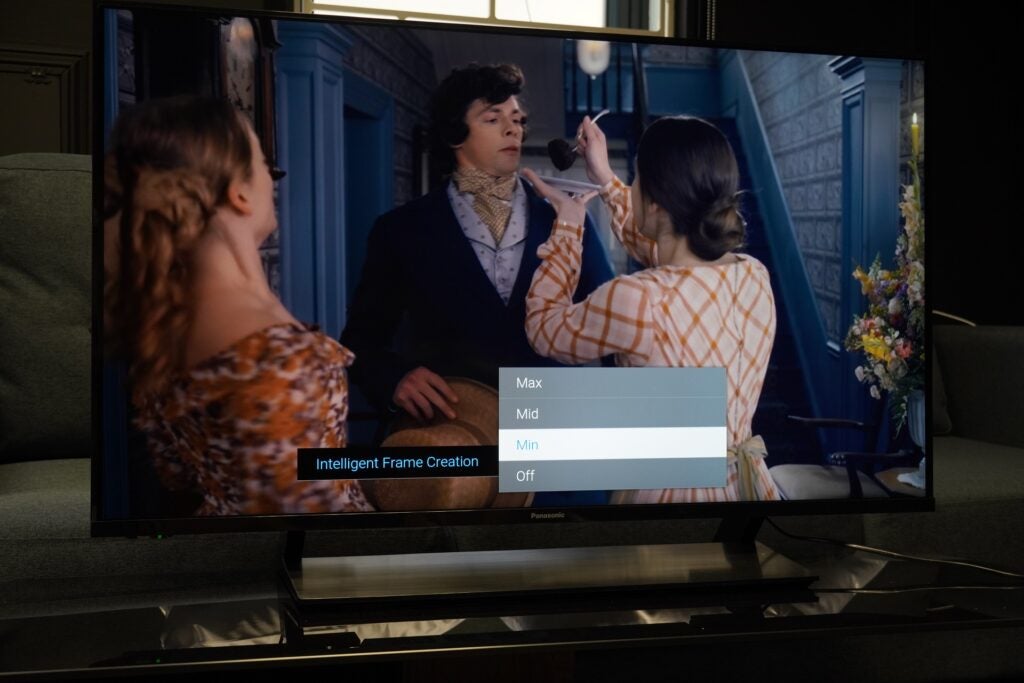
Watching Tenet in 4K HDR, the IMAX photography of the opera siege that opens the film isn’t the sharpest rendition, but neither is it overly soft. The TX-40JX850 picks up a lot of fine detail from the faces of the characters, as with the SWAT tactical gear The Protagonist is wearing and his amazingly well-coiffed beard.
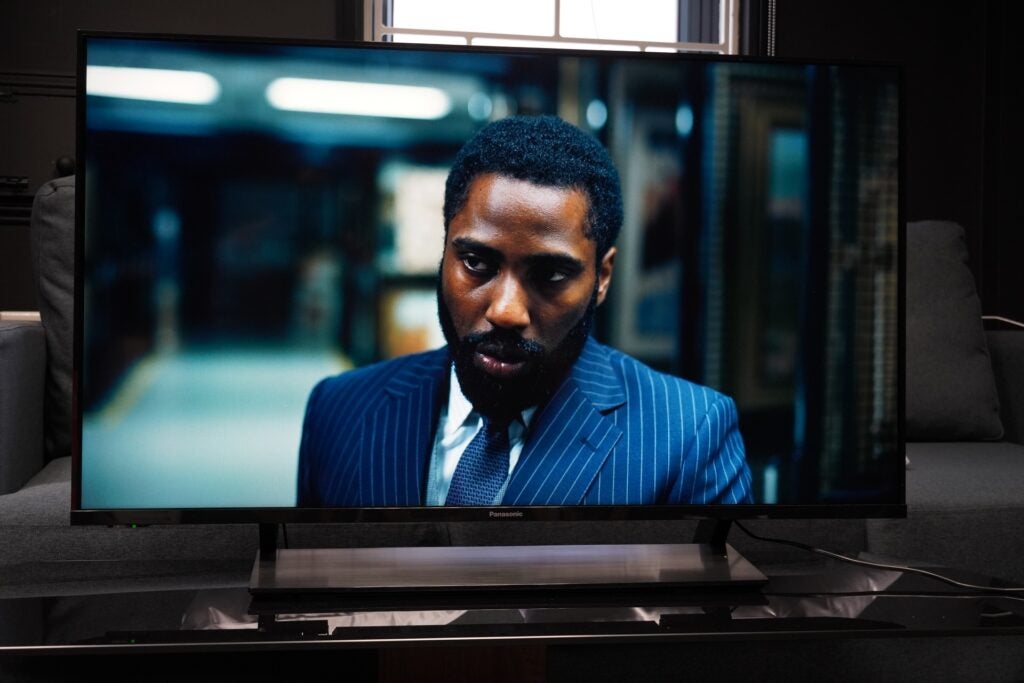
Backlight bleeding is noticeable, but only in a dark room. In a bright room with light spilling on the screen, the Panasonic’s HDR Bright Panel Plus panel handles black levels more convincingly, similar to the bigger JX940.
Watching both Severance (4K HDR10) on Apple TV+ and Reacher (4K HDR10+) on Prime Video, the Panasonic TX-40JX850 comes up trumps for contrast. When Reacher, Finlay and Roscoe are dealing with yet another dead body, the contrast between the night sky and headlights on a car looks great, making the scene pop with its bright and intense HDR highlights. The same applies to the medical lights, as Helly undergoes the Severance procedure. For a 40-inch LED TV this is a spiffy performance; it’s easily among the better TVs at this size.
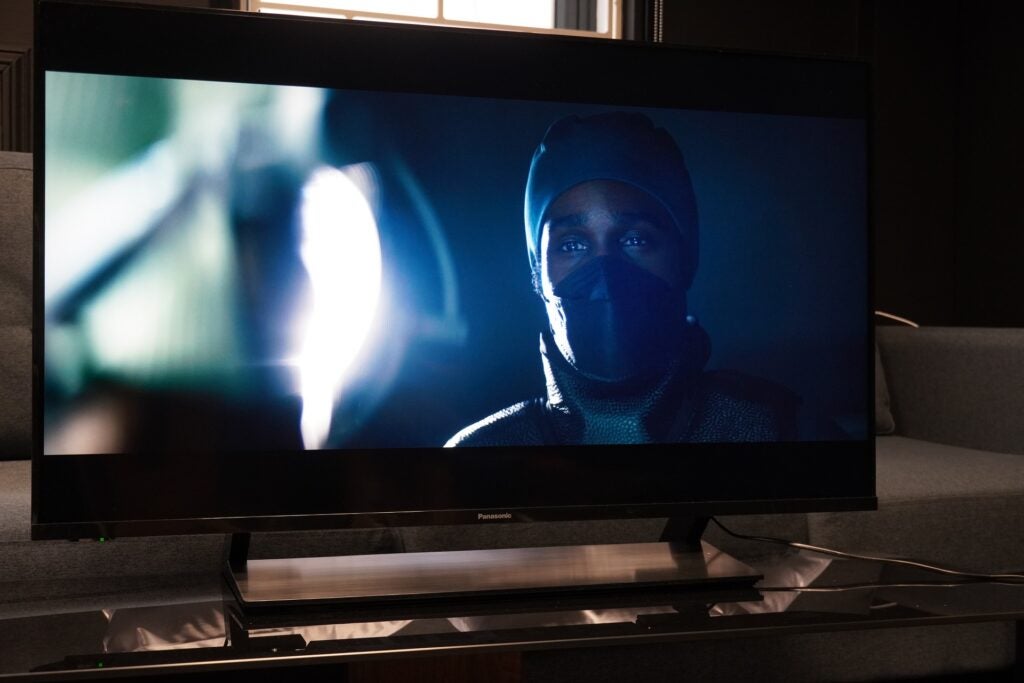
Sound Quality
- Spacious Atmos performance
- Good dialogue clarity
TVs can often fall flat (quite literally) on the sound front, but the Panasonic TX-40JX850 puts in a pretty good performance for its size.
There’s clarity to dialogue and a good amount of detail brought up for films and TV. High-frequency sounds are sharply relayed, and there’s decent bass with impact sounds as The Protagonist in Tenet kicks doors open in the opening action sequence.
With Last Night in Soho in Dolby Atmos, the JX850 proves to be expansive, spacious and dynamic, with a performance that sounds bigger than its four corners. I did notice some crackly moments, potentially a tell-tale sign of speaker distortion; but on the whole, this is a pretty good presentation for a 40-inch screen.
A soundbar would always improve on a TV’s sound, but for more causal watchers the TX-40JX850’s speakers will likely suffice. If you’re after a more complete performance then either the Sonos Ray or Beam Gen 2 would make a good partner – although with the Ray you’ll miss out on Atmos support.
Latest deals
Should you buy it?
Impressive HDR performance For a small screen, the JX850 delivers impressive contrast, black levels and highlights for a 40-inch model. If you enjoy bingeing on the latest streaming show, this is a good TV to watch them on.
Your budget isn’t a big one The asking price at the time of review is pretty steep for a 40-inch model, and higher than the 55- and 65-inch TVs in the range. That would put it out of reach of most people’s budget.
Final Thoughts
The Panasonic TX-40JX850 is easily one of the better small 4K HDR TVs currently available. Its HDR performance is accomplished, it sounds pretty decent, the construction is of high quality, and its features are good if you enjoy catch-up TV and streaming video apps.
Despite its swift gaming input lag, it isn’t a model for high-end gaming, such as LG’s 42-inch C2 OLED – and, similar to Samsung’s QE43QN90A, the performance comes at a high price. On some stores it was more expensive than the 55- and 65-inch models. The TX-40JX850 is also proving difficult to find, gradually going out of stock. If you’re after a bedroom TV, or for a small room, the JX850 is definitely a set to consider – if you can find it.
How we test
We test every televisions we review thoroughly over an extended period of time. We use industry standard tests to compare features properly. We’ll always tell you what we find. We never, ever, accept money to review a product.
Find out more about how we test in our ethics policy.
Tested for three weeks
Tested with real world use
Tested with benchmark discs/equipment
FAQs
You get a wide range of HDR formats on the JX850, from HDR10, HLG, HLG Photo, HDR10+ Adaptive and Dolby Vision
Full specs
Sustainability
Trusted Reviews’ holds the fact that global warming is not a myth as a core value and will continuously endeavour to help protect our planet from harm in its business practices.
As part of this mission, whenever we review a product we send the company a series of questions to help us gauge and make transparent the impact the device has on the environment.
We currently haven’t received answers to the questions on this product, but will update this page the moment we do. You can see a detailed breakdown of the questions we ask and why in our sustainability info page.








